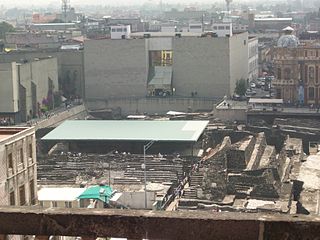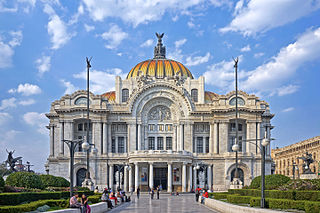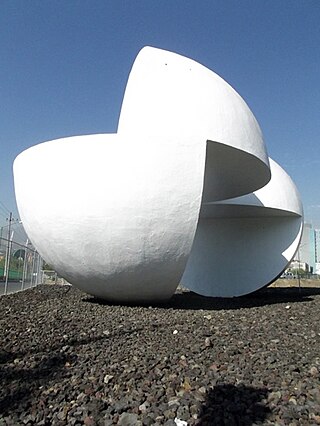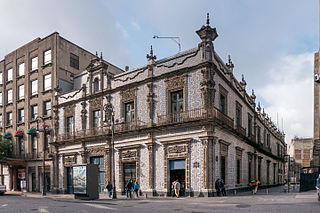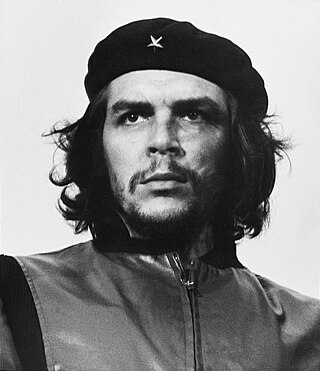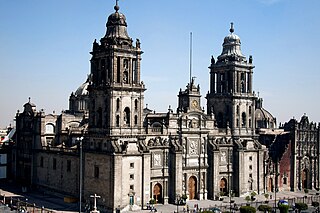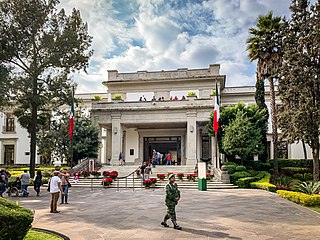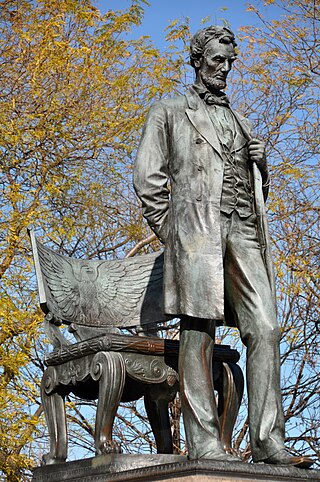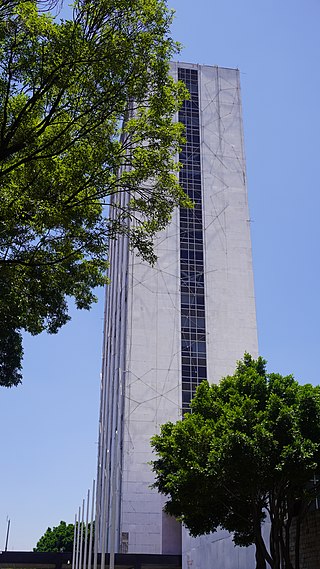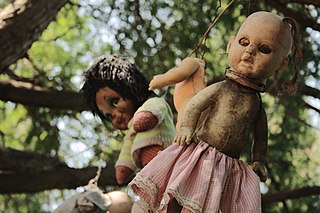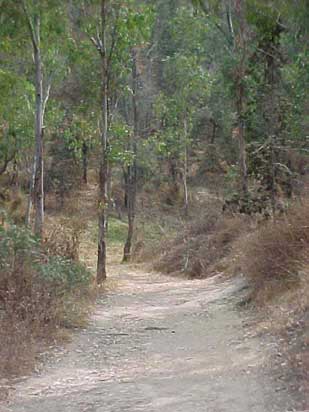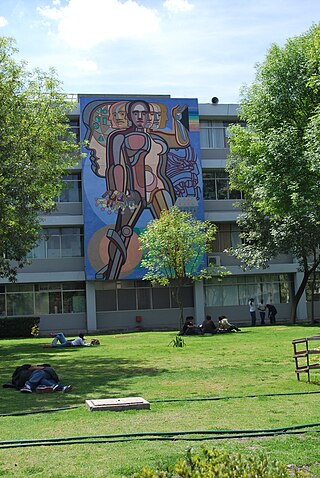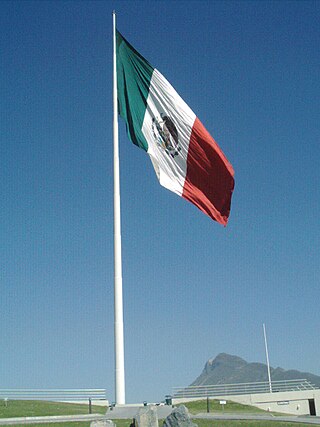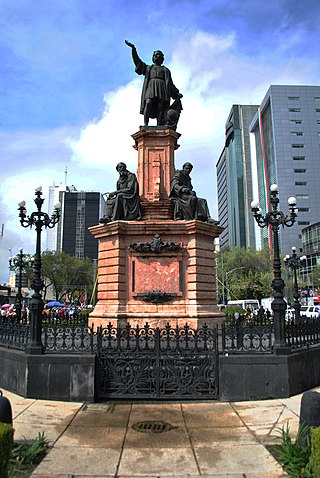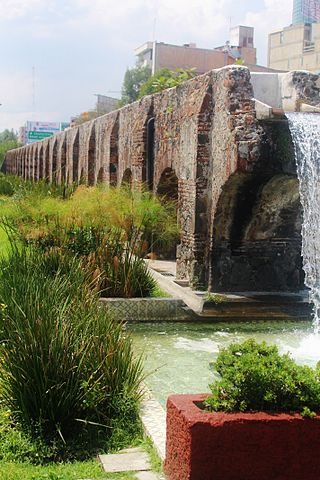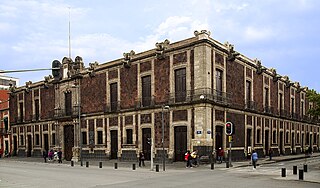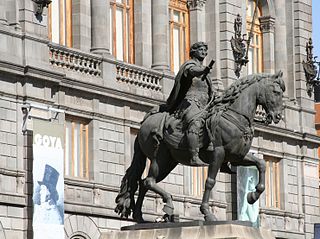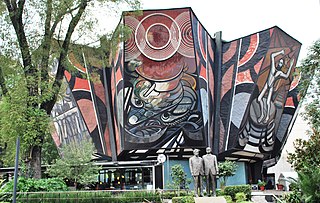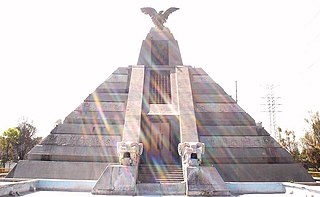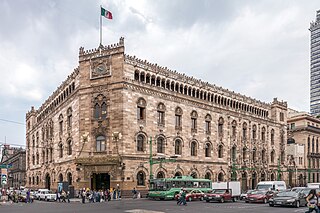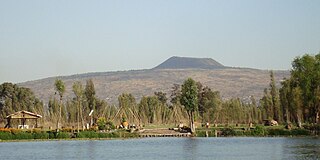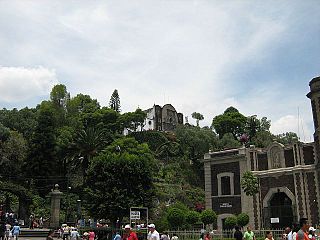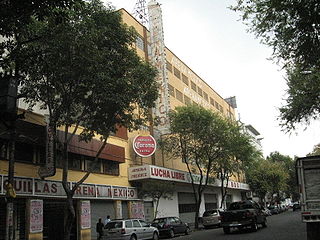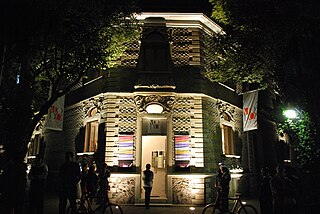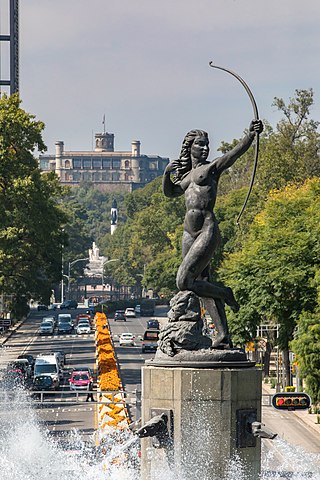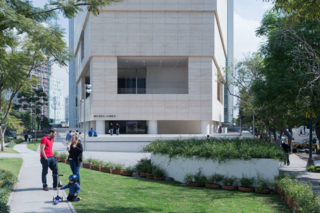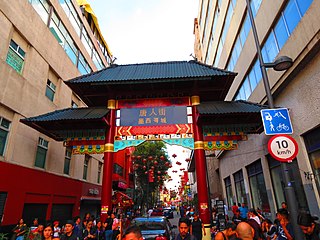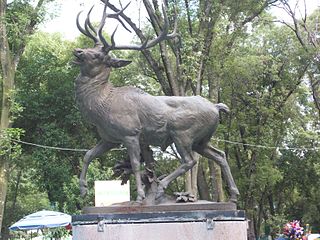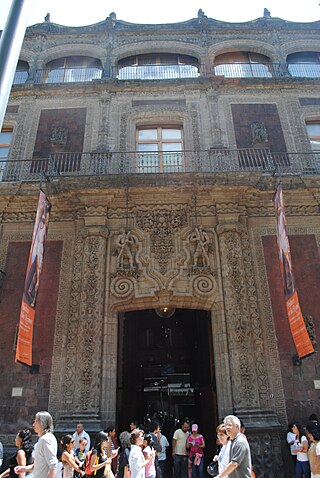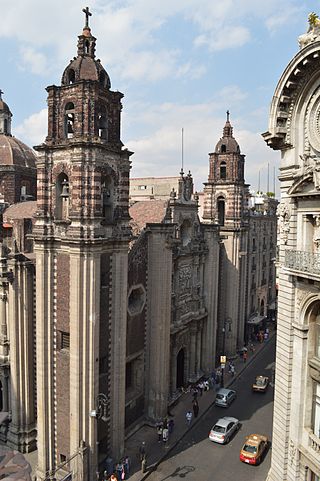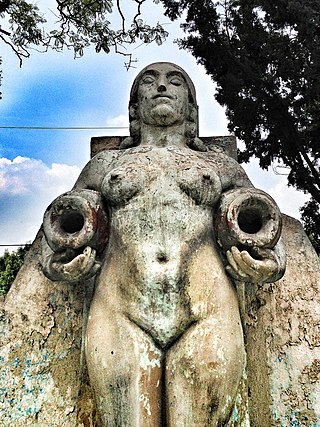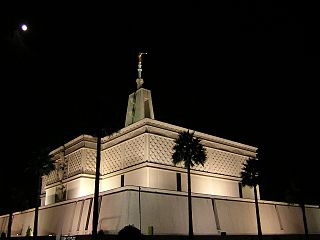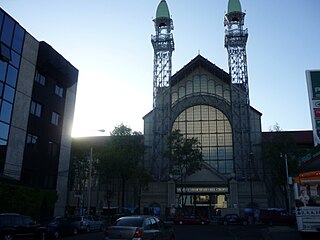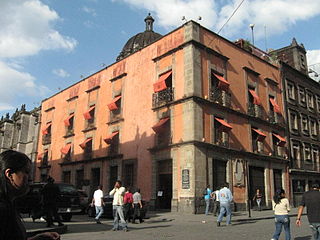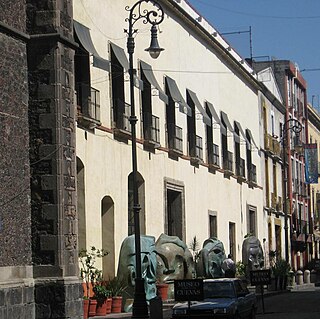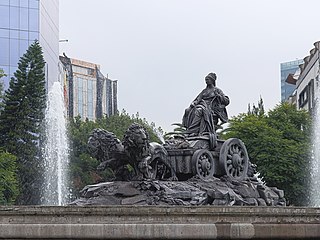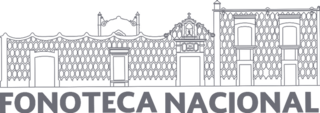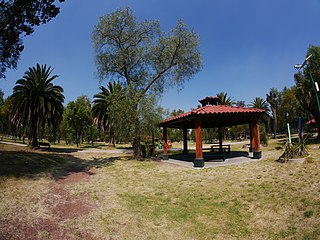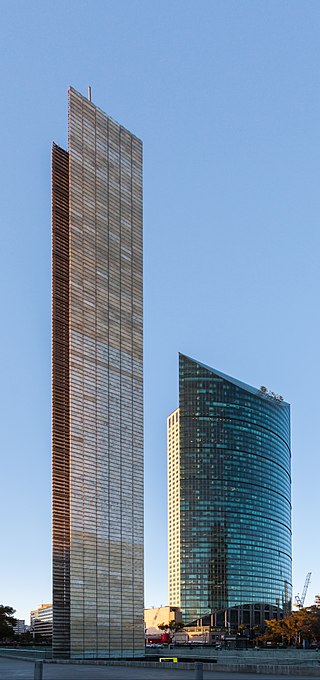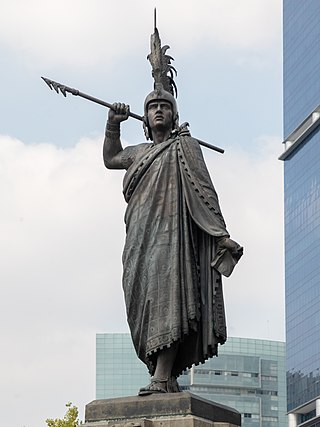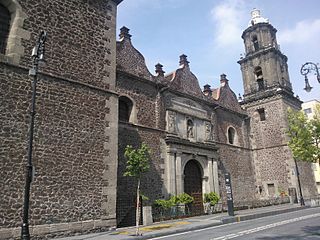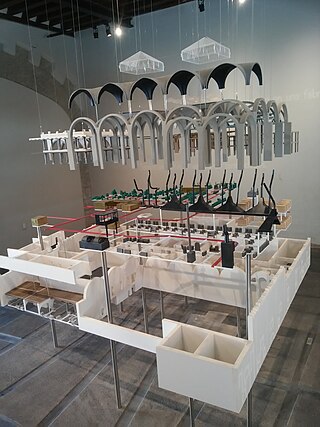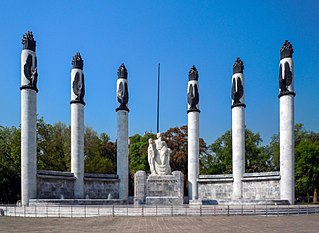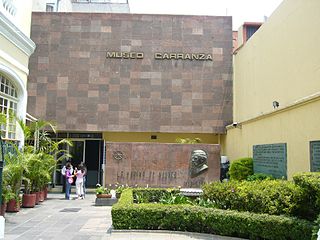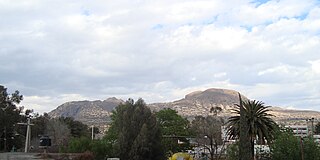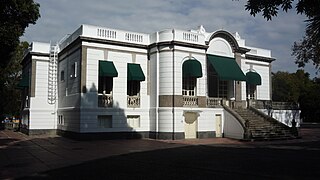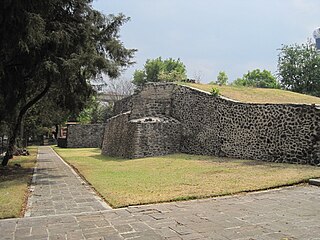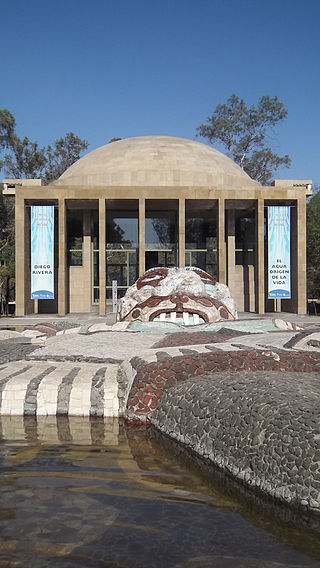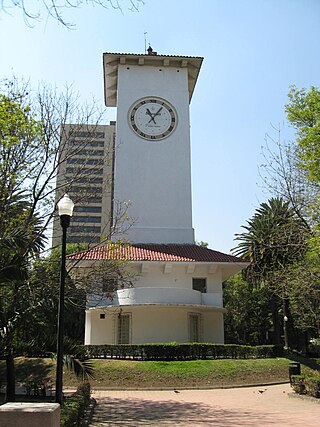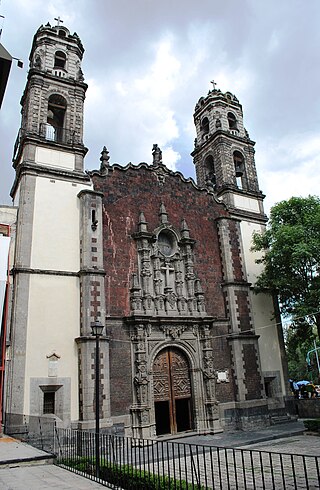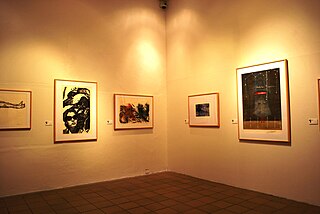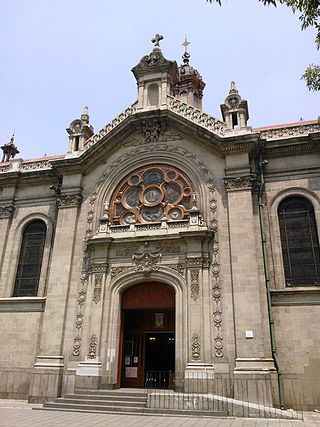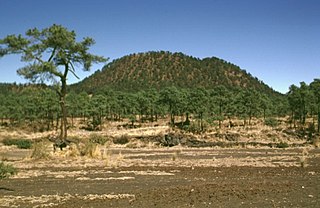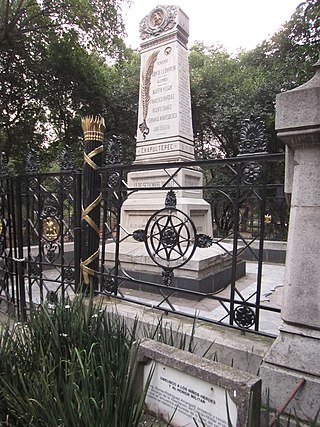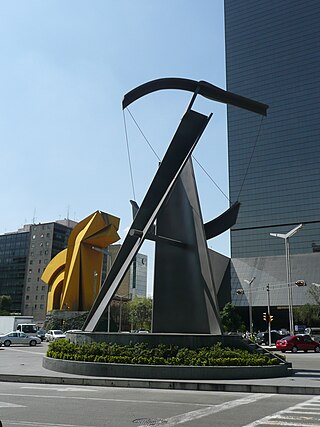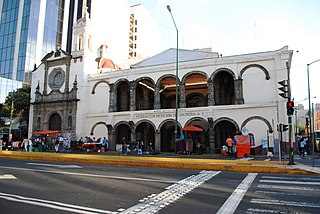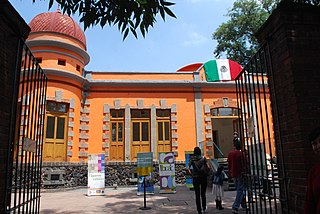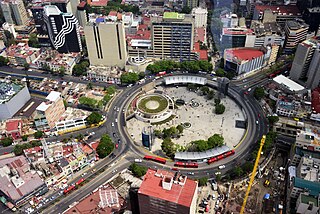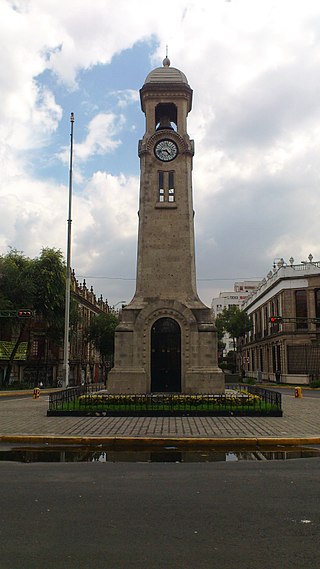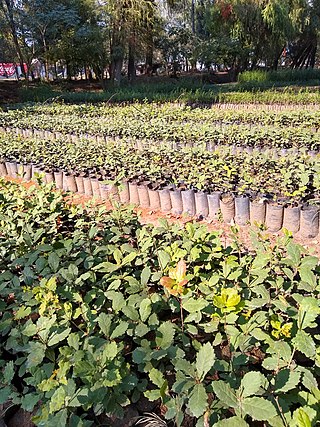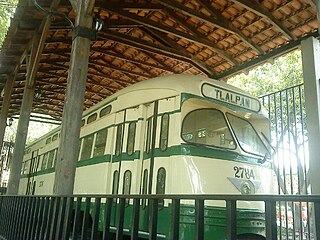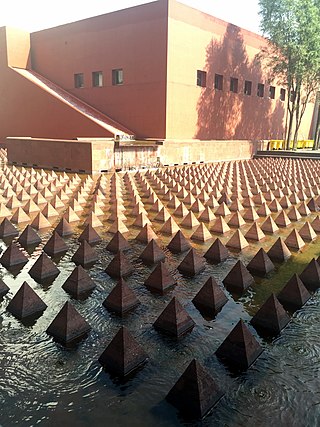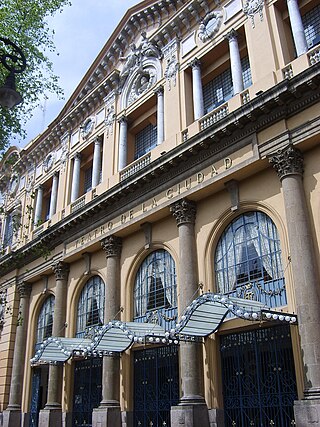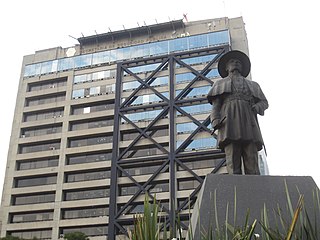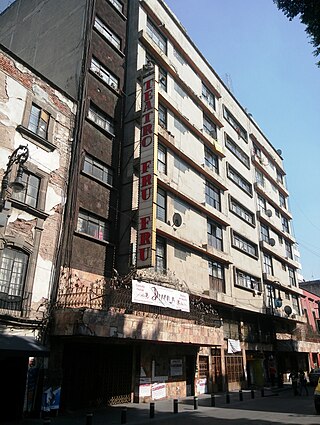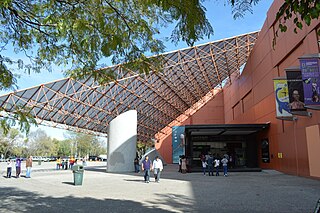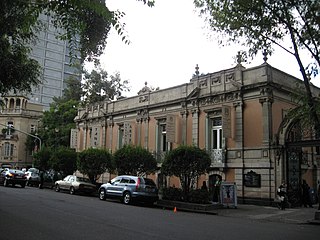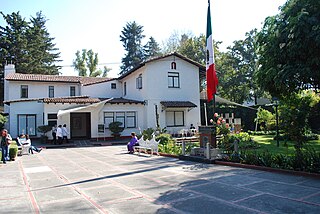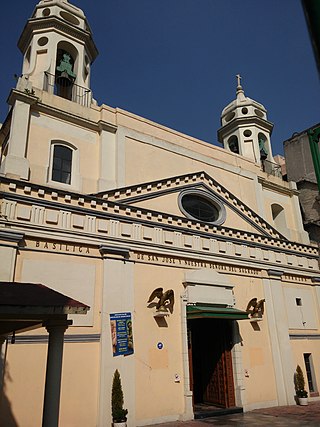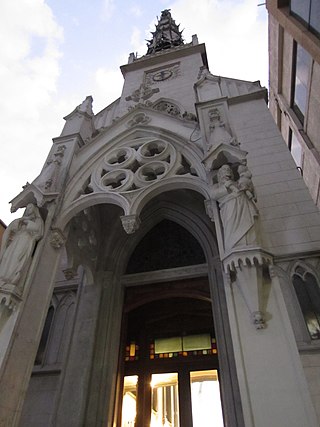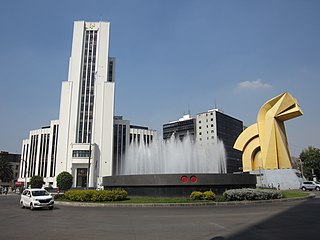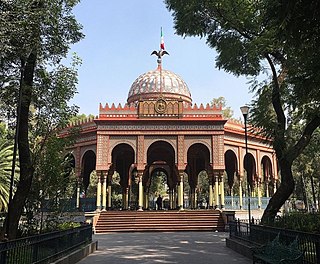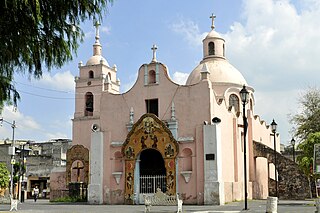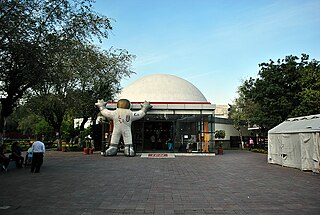100 Sights in Mexico City, Mexico (with Map and Images)
Legend
Premium Sights
Book tickets, guided tours and activities in Mexico City.
Guided Free Walking Tours
Book free guided walking tours in Mexico City.
Welcome to your journey through the most beautiful sights in Mexico City, Mexico! Whether you want to discover the city's historical treasures or experience its modern highlights, you'll find everything your heart desires here. Be inspired by our selection and plan your unforgettable adventure in Mexico City. Dive into the diversity of this fascinating city and discover everything it has to offer.
Sightseeing Tours in Mexico CityActivities in Mexico CityThe Templo Mayor was the main temple of the Mexican people in their capital city of Tenochtitlan, which is now Mexico City. Its architectural style belongs to the late Postclassic period of Mesoamerica. The temple was called Huēyi Teōcalli in the Nahuatl language. It was dedicated simultaneously to Huitzilopochtli, god of war, and Tlaloc, god of rain and agriculture, each of which had a shrine at the top of the pyramid with separate staircases. The central spire was devoted to Quetzalcoatl in his form as the wind god, Ehecatl. The temple devoted to Huitzilopochtli and Tlaloc, measuring approximately 100 by 80 m at its base, dominated the Sacred Precinct. Construction of the first temple began sometime after 1325, and it was rebuilt six times. The temple was almost totally destroyed by the Spanish in 1521, and the Mexico City Metropolitan Cathedral was built in its place.
The Palacio de Bellas Artes is a prominent cultural center in Mexico City. This hosts performing arts events, literature events and plastic arts galleries and exhibitions. "Bellas Artes" for short, has been called the "art cathedral of Mexico", and is located on the western side of the historic center of Mexico City which is close to the Alameda Central park.
Sol is a monumental sculpture made by Japanese artist Kiyoshi Takahashi as part of the Friendship Route, a set of 19 sculptures made by artists of various nationalities to commemorate the 1968 Olympic Games in Mexico. The work was installed at the intersection of the Peripheral Ring with Santa Teresa Street, south of Mexico City. It was the fourth stop on the route and represented Japan at the exhibition.
The Basilica of Santa María de Guadalupe, officially called Insigne y Nacional Basílica de Santa María de Guadalupe is a basilica of the Catholic Church, dedicated to the Virgin Mary in her invocation of Our Lady of Guadalupe, located at the foot of the Hill of Tepeyac in the Gustavo A. Madero borough of Mexico City. It belongs to the Primate Archdiocese of Mexico through the Guadalupana Vicariate, which since November 4, 2018, is in the care of Monsignor Efraín Hernández Díaz, who has the title of general and episcopal vicar of Guadalupe and abbot of the basilica.
The Casa de los Azulejos or Palacio de los Condes del Valle de Orizaba is an 18th-century Baroque palace in Mexico City, built by the Count of the Valle de Orizaba family. The building is distinguished by its facade, which is covered on three sides by blue and white colonial Talavera tiles from Puebla state. The palace remained in private hands until near the end of the 19th century. It changed hands several times before being bought by the Sanborns brothers who expanded their soda fountain/drugstore business into one of the best-recognized restaurant chains in Mexico. The house today serves as their flagship restaurant.
6. Frida Kahlo Museum
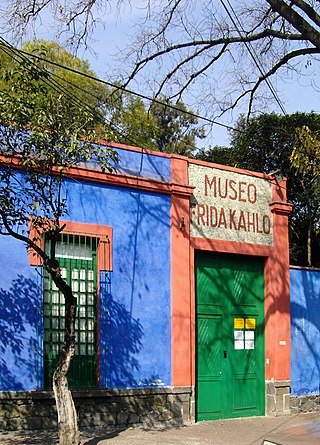
The Frida Kahlo Museum, also known as the Blue House for the structure's cobalt-blue walls, is a historic house museum and art museum dedicated to the life and work of Mexican artist Frida Kahlo. It is located in the Colonia del Carmen neighborhood of Coyoacán in Mexico City. The building was Kahlo's birthplace, the home where she grew up, lived with her husband Diego Rivera for a number of years, and where she later died in a room on the upper floor. In 1957, Diego Rivera donated the home and its contents to turn it into a museum in Frida's honor.
7. Ché Guevara y Fidel Castro
Ernesto "Che" Guevara was an Argentine Marxist revolutionary, physician, author, guerrilla leader, diplomat, and military theorist. A major figure of the Cuban Revolution, his stylized visage has become a ubiquitous countercultural symbol of rebellion and global insignia in popular culture.
8. National Autonomous University of Mexico
The National Autonomous University of Mexico, is a public research university in Mexico. It has several campuses in Mexico City, and many others in various locations across Mexico, as well as a presence in nine countries. It also has 34 research institutes, 26 museums, and 18 historic sites.
9. Estadio Azteca
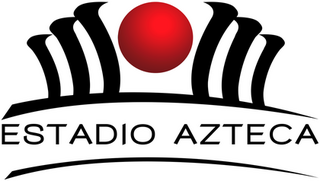
Estadio Azteca is a football stadium located in Coyoacán, Mexico City. It is the official home of football team Club América, as well as the Mexico national team. The stadium sits at an altitude of 2,200 m above sea level. With a capacity of 87,523, it is the largest stadium in Latin America and the sixth-largest association football stadium in the world.
10. Catedral Metropolitana de la Ciudad de México
The Metropolitan Cathedral of the Assumption of the Most Blessed Virgin Mary into Heaven, also commonly called the Mexico City Metropolitan Cathedral, is the cathedral church of the Catholic Archdiocese of Mexico. It is situated on top of the former Aztec sacred precinct near the Templo Mayor on the northern side of the Plaza de la Constitución (Zócalo) in the historic center of Mexico City. The cathedral was built in sections from 1573 to 1813 around the original church that was constructed soon after the Spanish conquest of Tenochtitlan, eventually replacing it entirely. Spanish architect Claudio de Arciniega planned the construction, drawing inspiration from Gothic cathedrals in Spain.
11. Constitution Square
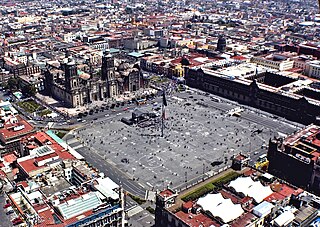
Zócalo is the common name of the main square in central Mexico City. Prior to the colonial period, it was the main ceremonial center in the Aztec city of Tenochtitlan. The plaza used to be known simply as the "Main Square" or "Arms Square", and today its formal name is Plaza de la Constitución. This name does not come from any of the Mexican constitutions that have governed the country but rather from the Cádiz Constitution, which was signed in Spain in the year 1812. Even so, it is almost always called the Zócalo today. Plans were made to erect a column as a monument to independence, but only the base, or zócalo, was built. The plinth was buried long ago, but the name has lived on. Many other Mexican towns and cities, such as Oaxaca, Mérida, and Guadalajara, have adopted the word zócalo to refer to their main plazas, but not all.
12. Six Flags Mexico

Six Flags México is an amusement park located in the Tlalpan forest and borough, on the southern edge of Mexico City, Mexico. It is owned and operated by Six Flags, and is the most visited theme park in Latin America with 2.8 million annual visitors. It was previously known as Reino Aventura when it was Mexican-owned and featured the orca whale Keiko as its principal attraction.
13. Museo Nacional de Antropología
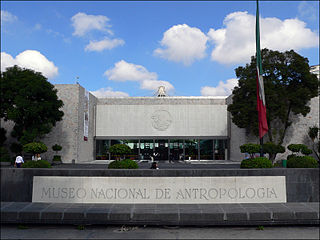
The National Museum of Anthropology is a national museum of Mexico. It is the largest and most visited museum in Mexico. Located in the area between Paseo de la Reforma and Mahatma Gandhi Street within Chapultepec Park in Mexico City, the museum contains significant archaeological and anthropological artifacts from Mexico's pre-Columbian heritage, such as the Stone of the Sun and the Aztec Xochipilli statue.
Wikipedia: National Museum of Anthropology (Mexico) (EN), Website
14. Complejo Cultural Los Pinos
Los Pinos was the official residence and office of the President of Mexico from 1934 to 2018. Located in the Bosque de Chapultepec in central Mexico City, it became the presidential seat in 1934, when Gen. Lázaro Cárdenas became the first president to live there. The term Los Pinos became a metonym for the Presidency of Mexico.
15. Abraham Lincoln: The Man
Abraham Lincoln: The Man is a larger-than-life size 12-foot (3.7 m) bronze statue of Abraham Lincoln, the 16th president of the United States. The original statue is in Lincoln Park in Chicago, and later re-castings of the statue have been given as diplomatic gifts from the United States to the United Kingdom, and to Mexico.
16. Centro Cultural Universitario Tlatelolco
The Tlatelolco University Cultural Center, located in the Tlatelolco Tower, is a multidisciplinary campus belonging to the National Autonomous University of Mexico, aimed at the construction of innovative forms of public advocacy for peace, human rights and the exercise of citizenship, through memory, critical thinking, empathy and artistic and cultural manifestations. It promotes the study, research and dissemination of issues related to art, memory and processes of resistance, as well as the cultural training of the various audiences and communities that frequent its spaces, such as the M68 Memorial of '68, social movements, the Temporary Exhibition Hall, the Artistic Linkage Unit, the Alaíde Foppa Library, and soon, an interpretation center on art, memory and resistance.
17. Island of the Dolls
The Island of the Dolls is a chinampa of the Laguna de Tequila located in the channels of Xochimilco, south of the center of Mexico City, Mexico. It is notable for the multitude of dolls of various styles and colors that can be found throughout the island. Local legends surround the dolls and the island's reclusive former owner, Don Julián Santana Barrera, making the island a popular destination for dark tourism.
18. Cerro de la Estrella
The Cerro de la Estrella, with its official name Huizachtepetl, is an orographic eminence that rises in the center of the Iztapalapa Mayor's Office, in the east of Mexico City. It is a geographical point of great archaeological importance, since on its slopes there have been signs of ancient human settlements whose antiquity dates back to the Mesoamerican Preclassic. In addition, it is the representation of Mount Golgotha during the staging of the Passion of Christ in Iztapalapa, an important religious event that attracts more than a million people year after year.
19. De las soluciones: una utopía posible, síntesis
Arnold Belkin was a Canadian-Mexican painter credited for continuing the Mexican muralism tradition at a time when many Mexican painters were shifting away from it. Born and raised in western Canada, he trained as an artist there but was not drawn to traditional Canadian art. Instead he was inspired by images of Diego Rivera's work in a magazine to move to Mexico when he was only eighteen. He studied further in Mexico, focusing his education and his career mostly on murals, creating a type of work he called a "portable mural" as a way to adapt it to new architectural style. He also had a successful career creating canvas works as well with several notable series of paintings. He spent most of his life and career in Mexico except for a stay in New York City in the late 1960s to mid-1970s. His best known works are the murals he created for the University Autónoma Metropolitana in the Iztapalapa borough of Mexico City.
20. Monumental Flag
The banderas monumentales are a collection of tall flagpoles containing large flags of Mexico located throughout Mexico. They are part of a program started in 1999 under President Ernesto Zedillo that is currently administered by the Secretariat of National Defense. The main feature of these monuments is a giant Mexican flag flying off a 50-meter-high (160-ft) flagpole. The size of the flag was 14.3 by 25 metres and it was flown on a pole that measured 50 metres (160 ft) high. In the time after the decree was issued, many more banderas monumentales have been installed throughout the country in various sizes. Many of the locations were chosen due to significant events in Mexican history that occurred there.
21. Monumento a Colón
The Monument to Christopher Columbus is a statue by French sculptor Charles Cordier first dedicated in 1877. It was originally located on a major traffic roundabout along Mexico City's Paseo de la Reforma, and was removed on 10 October 2020 in advance of protests.
Wikipedia: Monument to Christopher Columbus (Charles Cordier) (EN)
22. Antigua Academia de San Carlos

The Academy of San Carlos is an art academy that historically played an important role in the development of Mexican art and architecture. Founded in 1781 as the School of Engraving, it was the first major art school and the first art museum in the Americas.
23. Museo de la Revolucion Mexicana
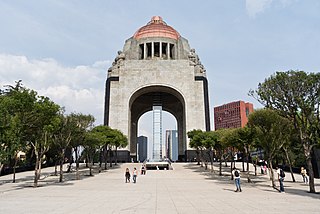
The Monument to the Revolution is a memorial arch commemorating the Mexican Revolution. It is located in the Plaza de la República, near the heart of the major thoroughfares Paseo de la Reforma and Avenida de los Insurgentes in downtown Mexico City.
24. Acueducto de Chapultepec
The Chapultepec aqueduct was built to provide potable water to Tenochtitlan, now known as Mexico City. Tenochtitlan was the capital of the Triple Aztec Alliance empire. This fresh water was transported from the Chapultepec springs. Two aqueducts following the same route from the springs were built by the Aztecs during the 15th century, the first destroyed by flooding and the second by the Spanish. After the Spanish conquest a colonial aqueduct was built, the ruins of which are located near Metro Sevilla.
25. Museo de la Ciudad de México
The Museum of Mexico City is located at Pino Suarez 30, a few blocks south of the Zocalo, on what was the Iztapalapa Causeway, near where Hernán Cortés and Moctezuma II met for the first time. This building used to be the palace of the Counts of Santiago de Calimaya, who were the descendants of one of the conquistadors with Cortés. The house was extensively remodeled during the colony to much the appearance that it has today and remained in the family until 1960, when the Mexico City government acquired it from them in order to found the Museum that is found there today. The museum contains a number of elements of the old palace as well as 26 rooms dedicated to the history and development of Mexico City from Aztec times to the present. It also contains a library and the studios of painter Joaquín Clausell, who lived here in the late 19th and early 20th centuries.
26. El Caballito
The equestrian statue of Charles IV of Spain is a bronze sculpture cast by Manuel Tolsá built between 1796 and 1803 in Mexico City, Mexico in honour of King Charles IV of Spain, then the last ruler of the New Spain. This statue has been displayed in different points of the city and is considered one of the finest achievements of Mr. Tolsá. It now resides in Plaza Manuel Tolsá.
27. Polyforum Cultural Siqueiros
The Polyforum Cultural Siqueiros is a cultural, political and social facility located in Mexico City as part of the World Trade Center Mexico City. It was designed and decorated by David Alfaro Siqueiros in the 1960s and hosts the largest mural work in the world called La Marcha de la Humanidad. The building has a theatre, galleries and more, but the main focus is the Forum Universal, which contains the interior portion of Siqueiros' mural work. Visitors can experience the mural while standing on a rotating stage, listening to Siqueiros narrate.
28. Monumento a la Raza
The Monumento a la Raza is a 50 meters (160 ft) high pyramid in northern Mexico City. It is located in the intersection of Avenida de los Insurgentes, Circuito Interior and Calzada Vallejo, in the Cuauhtémoc borough.
29. Palacio Postal
The Palacio de Correos de México, also known as the "Correo Mayor" is located in the historic center of Mexico City, on the Eje Central near the Palacio de Bellas Artes. It was built in 1907, when the Post Office became a separate government entity. Its design and construction was the most modern at the time, including a very eclectic style which mixed several different traditions, mainly Neo-Plateresque, into a very complex design. In the 1950s, the building was modified in a way that caused stress and damage, so when the 1985 earthquake struck Mexico City, it was heavily damaged. In the 1990s, restoration work has brought the building back to original construction and appearance.
30. Biblioteca Vasconcelos
Biblioteca Vasconcelos, also known as the Megabiblioteca by the press, is a library in the Buenavista neighborhood of Mexico City. It is dedicated to José Vasconcelos, the philosopher and former president of the National Library of Mexico. The library is spread across 38,000 square metres, and had an initial planned cost of 954 million pesos. The Congress of Mexico proposed plans to reduce the budget of 2006 that included cuts for all three branches of government, but the National Action Party (PAN) presented an alternate budget that preserved funds for Enciclomedia and the Vasconcelos Library.
31. Teuhtli
Teuhtli or Teuctzin is an extinct Hawaiian-type volcano of shield-like formation — meaning that its diameter is much larger than its height. It is located in the south of Mexico City, Mexico and reaches an altitude of 2710 m a.s.l., serving as the geographical limit of the municipalities of Milpa Alta, Tláhuac and Xochimilco.
32. Cerro Tepeyac
Tepeyac or the Hill of Tepeyac, historically known by the names Tepeyacac and Tepeaquilla, is located inside Gustavo A. Madero, the northernmost Alcaldía or borough of Mexico City. According to the Catholic tradition, it is the site where Saint Juan Diego met the Virgin of Guadalupe in December 1531, and received the iconic image of the Lady of Guadalupe. The Basilica of Our Lady of Guadalupe located there is one of the most visited Catholic shrines in the world. Spanish colonists erected a Catholic chapel at the site, Our Lady of Guadalupe, "the place of many miracles." It forms part of the Sierra de Guadalupe mountain range.
33. Arena México
Arena México is an indoor arena in Mexico City, Mexico, located in the Colonia Doctores neighborhood in the Cuauhtémoc borough. The arena is primarily used for professional wrestling, or lucha libre, shows promoted by Consejo Mundial de Lucha Libre (CMLL). The building is called the "cathedral of lucha libre". Arena México has a seating capacity of 16,500 when configured for professional wrestling or boxing events. The current building was completed in 1956, built by Salvador Lutteroth, owner of CMLL at the time and is the largest arena built specifically for wrestling. The building was used as the venue for the boxing competition at the 1968 Summer Olympics, and throughout the last half of the 20th century hosted several large boxing events.
34. MODO - Museo del Objeto del Objeto
The Museo del Objeto, or MODO, is a museum in Mexico City and the first museum in Mexico dedicated to design and communications. It was opened in 2010 based on a collection of commercial packaging, advertising, graphic arts, common devices and many other objects dating back to 1810 collected by Bruno Newman over more than 40 years. The museum is dedicated to the preservation of its collection of more than 30,000 items from two centuries and to the research in the history of design and communications.
35. Casa Luis Barragán
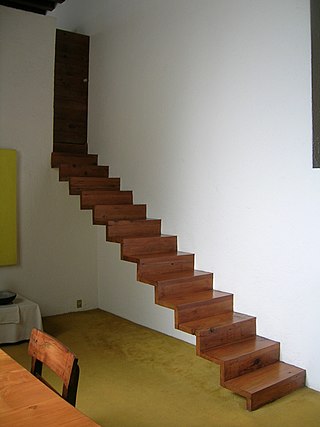
Luis Barragán House and Studio, also known as Casa Luis Barragán, is the former residence of architect Luis Barragán in Miguel Hidalgo district, Mexico City. It is owned by the Fundación de Arquitectura Tapatía and the Government of the State of Jalisco. It is now a museum exhibiting Barragán's work and is also used by visiting architects. It retains the original furniture and Barragán's personal objects. These include a mostly Mexican art collection spanning the 16th to 20th century, with works by Picasso, Diego Rivera, José Clemente Orozco, Jesús Reyes Ferreira and Miguel Covarrubias.
36. Sarah Andersen Mural
Sarah C. Andersen is an American cartoonist and illustrator best known for the webcomic Sarah's Scribbles. Currently based in Portland, Oregon, she has collaborated with artists and writers like Andy Weir over the course of her career, and has been recently noted for her public opposition to the rise of text-to-image models and generative AI illustrations.
37. Museo Casa de León Trotsky
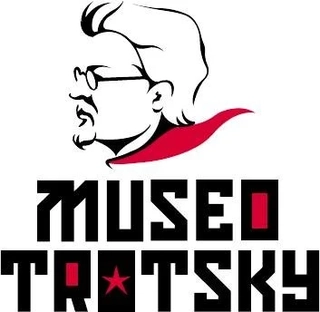
The Leon Trotsky House Museum, Trotsky Museum, or Trotsky House Museum, is a museum honoring Leon Trotsky and an organization that works to promote political asylum, located in the Coyoacán neighborhood of Mexico City. Its official name is Instituto del Derecho de Asilo - Museo Casa de León Trotsky.
38. Fuente de la Diana Cazadora
The Huntress Diana Fountain stands as a monumental sculptural landmark situated within the roundabout at the intersection of Paseo de la Reforma and Río Misisipí and Sevilla streets. Positioned on the border of the Colonia Cuauhtémoc and Colonia Juárez neighborhoods in Mexico City, this fountain serves as a focal point within the urban fabric of the metropolis. Designed by the Italian architect and sculptor Enrique Alciati, the fountain was unveiled in 1942 and has since become an enduring symbol of Mexico City's cultural heritage and urban landscape. The centerpiece of the fountain is a striking bronze statue depicting Diana, the Roman goddess of the hunt, poised atop a stone pedestal adorned with decorative reliefs and motifs. Adjacent to the Huntress Diana Fountain, several landmarks bear homage to its iconic presence within Mexico City's urban landscape. Among these notable sites are the Cine Diana and two prominent skyscrapers: the Corporativo Reforma Diana and Torre Diana.
39. Jumex Museum
Colección Jumex is a private art collection owned by Eugenio López Alonso. It includes around 2,800 works by Damien Hirst, Andy Warhol, Gabriel Orozco, Cy Twombly, Jeff Koons, Marcel Duchamp, Andreas Gursky, Darren Almond, Tacita Dean, Olafur Eliasson, Martin Kippenberger, Carl Hopgood, Bruce Nauman, David Ostrowski, Francis Alÿs, Urs Fischer, Gego, Donald Judd, Ed Ruscha, Nancy Rubins, Richard Prince, Stefan Brüggemann, and Martin Creed.
40. Chinatown
Barrio Chino is a barrio located in the downtown area of Mexico City, near the Alameda Central and Palacio de Bellas Artes. Barrio Chino exists primarily on two blocks along Dolores Street and one block east and west of the street. There was an expulsion of the ethnic Chinese in the 1930s and since then the ethnic Chinese have mixed and dispersed with the local population. According to the government of Mexico City, about 3,000 families in the city have Chinese heritage. In many parts of the older sections of the city, there are “cafes de chinos”, which are eateries that serve Chinese and Mexican food. The buildings in Barrio Chino are no different from the rest of the city, but businesses here are either restaurants or importers. Most of the shops and restaurants here had abundant Chinese-style decorations and altars, but statues of the Virgin of Guadalupe and San Judas Tadeo can be seen as well.
41. Parque de los Venados
Francisco Villa Park, also known as Parque de los Venados, is a park in Mexico City. It was built between 1952 and 1953, covers 95,000 m² and on its surface there are a total of 2682 trees of 39 different species.
42. Palacio de Iturbide
The Palace of Iturbide is a large palatial residence located in the historic center of Mexico City at Madero Street #17. It was built by the Count of San Mateo Valparaíso as a wedding gift for his daughter. It gained the name “Palace of Iturbide” because Agustín de Iturbide lived there and accepted the crown of the First Mexican Empire at the palace after independence from Spain. Today, the restored building houses the Fomento Cultural Banamex; it has been renamed the Palacio de Cultura Banamex.
43. Iglesia de la Profesa
The Church of San Felipe Neri, commonly known as "La Profesa", is a Roman Catholic parish church that was established by the Society of Jesus late in the 16th century as the church of a community of professed Jesuits. The church is considered to be an important transitional work between the more sober or moderate Baroque style of the 17th century and the extremely decorated manifestations of the Baroque of the 18th century in Mexico.
44. Parque México
The Parque México, officially Parque San Martín, is a large urban park located in Colonia Hipódromo in the Condesa area of Mexico City. It is recognized by its Art Deco architecture and decor as well as being one of the larger green areas in the city. In 1927, when the surrounding neighborhood of Colonia Hipódromo was being built, the park was developed on the former site of the horse race track of the Jockey Club de México. Today, Parque México is not only the center of Colonia Hipódromo, it is also the cultural center of the entire La Condesa section of the city.
45. Mexico City Mexico Temple
The Mexico City Mexico Temple is the 28th constructed and 26th operating temple of the Church of Jesus Christ of Latter-day Saints. The intent to build the temple was announced on April 3, 1967, by church president Spencer W. Kimball.
46. Museo Universitario del Chopo
The Museo Universitario del Chopo is located at Doctor Enrique González Martínez Street in the Colonia Santa María la Ribera of Mexico City. It has collections in contemporary art, and is part of the National Autonomous University of Mexico (UNAM).
47. Museo Templo Mayor
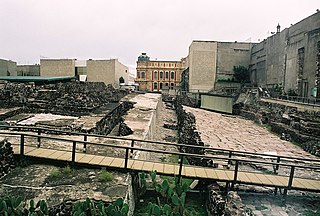
The Templo Mayor Museum is located in the Historic Center of Mexico City, Mexico. The objective of the museum is to publicize the findings found within the framework of the on-site research that is carried out in the archaeological zone of the Templo Mayor of the Mexica.
48. Casa de la Primera Imprenta de América
The House of the First Printing Press in the Americas at the corner of Moneda and Licenciado Primo Verdad streets in Mexico City was the home of the first printing press/print shop in the New World. The printer Juan Pablos oversaw the printing of at least 35 books at this print shop between 1539, the date of the first book printed in the Americas, and his death in 1560.
Wikipedia: House of the First Print Shop in the Americas (EN)
49. Museo Rufino Tamayo
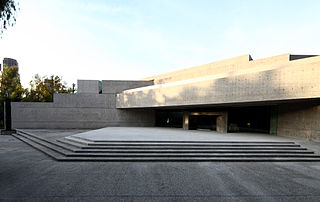
Museo Rufino Tamayo is a public contemporary art museum located in Mexico City's Chapultepec Park, that produces contemporary art exhibitions, using its collection of modern and contemporary art, as well as artworks from the collection of its founder, the artist Rufino Tamayo.
50. Museo de los Ferrocarrileros
The Railroad Museum is located north of Mexico City in the facilities occupied by the La Villa station. Inaugurated in 2006, the exhibition shows the history of the railroads in Mexico, the history of the La Villa train station, as well as different social movements of the railroad workers in the history of Mexico. It belongs to the Ministry of Culture of Mexico City.
51. Museo José Luis Cuevas
The José Luis Cuevas Museum is located just off the Zócalo within the Historic center of Mexico City, in Mexico City, Mexico. The museum and Church of Santa Inés were built as parts of the Convent of Santa Inés complex. The museum is in the convent's colonial era residential hall.
52. Fuente de Cibeles
The Fountain of Cybele in Mexico City is a bronze statue installed in Colonia Roma in 1980, and refurbished in 2011. A symbol of brotherhood between the Spanish and Mexican communities, it is a replica of the fountain located in the Plaza de Cibeles in Madrid that was built by architect Ventura Rodríguez between 1777 and 1792. The Mexican version is located at a traffic circle in Plaza Villa de Madrid, where Oaxaca, Durango, Medellín and El Oro streets converge in Colonia Roma. The plaza and statue are considered emblematic sights of Mexico City.
53. Fonoteca Nacional
The National Sound Library is a Mexican institution under the Ministry of Culture that preserves the sound heritage and promotes the culture of listening and sound through five priority activities: rescue and preserve the country's sound heritage; to publicize the sound heritage it safeguards; to carry out academic, artistic and cultural activities related to sound; to promote a culture of listening among the population, and to stimulate the creation and artistic experimentation of sound.
54. Nuestra Señora del Pilar
La Enseñanza Church (1772-1778) is located on 104 Donceles Street in the historic center of Mexico City. The Mexican Churrigueresque style of this church, especially that of its altarpieces, is upheld as the pinnacle of the Baroque period in Mexico, as this style soon gave way to the Neoclassic shortly after this church was built. The church’s official name is Iglesia de Nuestra Señora del Pilar. The former convent was called El Convento de la Enseñanza La Antigua, from which is derived the church’s popular name. After the Reform War, the convent was disbanded. The complex has had various uses, but the church has been returned to its sacred function.
55. Bosque de San Juan de Aragón
The Forest of San Juan de Aragón is a public park in Mexico City. It is one of the most important green areas of that site and is located in the Mayor's Office Gustavo A. Madero. It was created in 1964 and has an approximate extension of 162 hectares, 114 of them formed by green areas, and the rest distributed in the various cultural and recreational areas such as the Lake, the Children's Coexistence Center, the skating track, the theater outdoors, the projection room and the popular spa. This lung of the metropolitan area records an influx of 3.5 million visitors per year and on December 12, 2008, environmental value area was declared by the capital government.
56. Estela de Luz
The Estela de Luz is a monument in Mexico City built in 2011 to commemorate the bicentenary of Mexico's independence from Spanish rule. Its design was the winning entry in an invited competition to seek the best combination of Mexico's past and future; the design uses quartz and electric lighting to achieve this effect. The Estela de Luz is mainly used for cultural events. Below it, the Centro de Cultura Digital cultural complex was built.
57. Monumento a Cuauhtémoc
The Monument to Cuauhtémoc is an 1887 monument dedicated to the last Mexica ruler (tlatoani) of Tenochtitlan Cuauhtémoc, located at the intersection of Avenida de los Insurgentes and Paseo de la Reforma in Mexico City. It is the work of Francisco Jiménez and Miguel Noreña in the "neoindigenismo", and was proposed to promote the new government of Porfirio Díaz.
58. Teatro Metropólitan
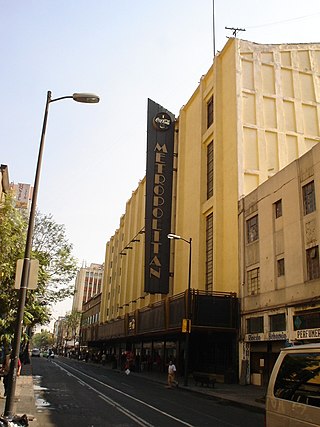
The Teatro Metropólitan is a theater in Mexico City. It was previously known as the Cine Metropólitan, and was built as a movie palace. The architect was Pedro Gorozpe E. with interior decorations by Aurelio G. Mendoza.
59. Iglesia de Jesús Nazareno
The Church of Jesus Nazareno is a Catholic temple located in the Historic Center of Mexico City, in the Cuauhtémoc mayor's office and was built in the seventeenth and eighteenth centuries, with modifications in the nineteenth century. It is attached to the hospital of the same name and is characterized by housing the apocalypse mural of José Clemente Orozco, the remains of Hernán Cortés and the façade of the first Cathedral of Mexico which dates from the end of the sixteenth century and is one of the few construction elements of that century that are preserved in the historic center of the city. The temple was declared a historical monument on August 29, 1932.
Wikipedia: Iglesia de Jesús Nazareno (Ciudad de México) (ES)
60. Museo Numismático Nacional
The National Numismatic Museum is part of the Mexican Mint, where since the seventeenth century the industrial process of separating the gold that was mixed with silver from the mines was carried out, this enclosure is located in the Historic Center, in the old Casa del Apartado.
61. Monumento a los Niños Héroes
The Monumento a los Niños Héroes, officially Altar a la Patria, is a monument installed in the park of Chapultepec in Mexico City, Mexico. It commemorates the Niños Héroes, six mostly teenage military cadets who were killed defending Mexico City from the United States during the Battle of Chapultepec, one of the last major battles of the Mexican–American War, on 13 September 1847.
62. Casa de Carranza
The Casa de Carranza Museum is located in the Colonia Cuauhtémoc of Mexico City, Mexico. The museum is named after President Venustiano Carranza who lived there for the last six months of his life and tells the story of the Mexican Revolution focusing on the part related to Carranza, the causes of his confrontation with Álvaro Obregón and the betrayal of Victoriano Huerta.
63. Monumento a Colón
The Monument to Christopher Columbus, located at the intersection of av. Buenavista and Héroes Ferrocarrileros, in the Cuauhtémoc section of Mexico City, was inaugurated in 1892, for the 400th anniversary of Christopher Columbus' landfall in the Caribbean. The statue is the only one depicting Columbus in Mexico City; Charles Cordier's Monument to Christopher Columbus (1877) had been installed on Paseo de la Reforma but was moved outside the city following protests in 2020.
Wikipedia: Monument to Christopher Columbus (Buenavista, Mexico City) (EN)
64. Museo de arte Carrillo Gil
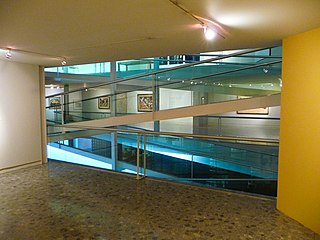
The Museo de Arte Carrillo Gil is a museum in Mexico City. It bears the name of the collector Álvar Carrillo Gil and focuses mainly on the dissemination of its collection made up mainly of works by José Clemente Orozco, David Alfaro Siqueiros and Diego Rivera. The museum also presents contemporary and experimental art by young artists.
65. Volcán Guadalupe
The Tetlalmanche volcano, known as the Guadalupe or El Elefante volcano, is an orographic eminence that is part of the Santa Catarina mountain range, in Mexico City. Its summit represents the highest point of the municipalities of Iztapalapa and Tláhuac, with an elevation of 2820 m a.s.l.
66. Museo de la Caricatura
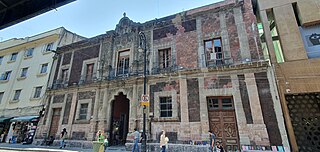
The Caricature Museum is located in an 18th-century Baroque building in the historic center of Mexico City. It was opened in 1987 to preserve and promote the history of Mexican cartooning, done for both political and entertainment purposes. The historic building it occupies was originally the home of Cristo College, a royal college established in 1612.
67. Casa del Lago UNAM
Casa del Lago was instituted in 1959 as the first off-campus Cultural Center of the National Autonomous University of Mexico. It is characterized by its extraordinary ability to promote the cultural and generational encounter between the vanguard and tradition. It was established with Juan José Arreola as its founding director and is located in the Woods of Chapultepec, a traditional Sunday walk area for the inhabitants of the capital.
68. Zona arqueológica de Mixcoac
Mixcoac It is an archaeological zone belonging to the Mexica culture. It was located on the shores of Lake Texcoco and in its last stage it was subject to the power of Tenochtitlan. With the arrival of the Spanish conquistadors, the settlement was practically destroyed to its foundations, which are the only thing that survives of the architecture of the place and can be seen today in what is now the San Pedro de los Pinos, on the corner of San Antonio Avenue and Periférico.
69. Cárcamo de Dolores
The Cárcamo de Dolores is a hydraulic structure located on the Second Section of Chapultepec Park, in Mexico City, comprising the building designed by architect Ricardo Rivas, inside the originally underwater mural Agua, el origen de la vida of Mexican muralist Diego Rivera, the art installation Cámara Lambdoma by Ariel Guzik, and in outside, the Tlaloc Fountain, also of Rivera.
70. Templo de Corpus Christi

The Corpus Christi Church is a former church on Avenida Juárez in the Historic center of Mexico City. It is the only remaining part of the Convent of Corpus Christi, founded in 1724 for indigenous women and which was closed as part of the Reform Laws. The architect of the baroque structure was Pedro de Arrieta who also designed the Palace of the Inquisition and the Church of San Felipe Neri "La Profesa".
71. Parque Lincoln
Parque Lincoln is a city park in Mexico City, Mexico in the Polanco neighborhood. The park memorializes US President Abraham Lincoln and has a copy of Abraham Lincoln: The Man, also known as Standing Lincoln. The park also has a statue of Martin Luther King Jr.
72. Santa Vera Cruz
The Santa Veracruz Monastery in the historic center of Mexico City is one of the oldest religious establishments in Mexico City and was the third most important church in the area in the 16th century. It was established by a religious brotherhood founded by Hernán Cortés.
73. Museo Nacional de la Estampa
The Museo de la Estampa is a museum in Mexico City, dedicated to the history, preservation and promotion of Mexican graphic arts. The word “estampa” means works in the various printmaking techniques which have the quality of being reproducible and include seals, woodcuts, lithography and others. The museum was created in 1986 and located in a 19th-century Neoclassical building located in the Plaza de Santa Veracruz in the historic center of the city. This building was remodeled both to house the museum and to conserve its original look.
74. Templo de San Fernando
The Temple of San Fernando is a Catholic temple located in the Guerrero neighborhood, next to the cemetery of the same name. He was part of the Apostolic College of Propaganda Fide of San Fernando of the Franciscan Order, where the missionaries who participated in the evangelization of New Spain were trained.
75. Teatro Blanquita
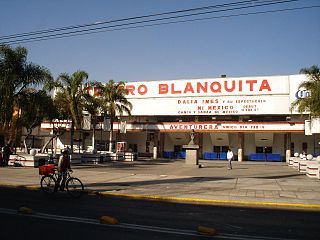
The Blanquita Theater, also called El Blanquita, was a theater in Mexico City inaugurated on August 27, 1960 and was located at number 16 of the Lázaro Cárdenas Central Axis at the height of the Historic Center of Mexico City. It was inaugurated at the initiative of the writer and theater entrepreneur Margo Su and her husband Félix Cervantes. On its stage, popular plays and concerts were presented. In 2010 it was one of the five most visited in the Mexican capital. Blanca Eva Cervantes was Félix Cervantes' first cousin.
76. Plaza de la Solidaridad
The Plaza de la Solidaridad is a plaza located in Mexico City, Mexico, adjacent to the Alameda Central. During the sixteenth century, the area in which the park is now located was on the outskirts of the city. When the city grew and urbanized, the Convent of San Diego occupied the space.
77. Nuestra Señora de Guadalupe El Buen Tono
The Church of Our Lady of Guadalupe, known as the Church of the Good Tone, is a temple located in the San Juan neighborhood of the Historic Center of Mexico City in the Cuauhtémoc Mayor's Office. It was built at the beginning of the twentieth century. Its patron saint's day is celebrated on December 12. It is characterized by being the only temple in the country that is referred to by the name of a manufacturing establishment, as well as by its eclectic French-inspired style.
Wikipedia: Iglesia de Nuestra Señora de Guadalupe (Ciudad de México) (ES)
78. Xitle
Xitle is a monogenetic volcano in the Ajusco range in Cumbres del Ajusco National Park. It is located in the Tlalpan borough in the southwestern part of Mexico City. It is an ash cone volcano with a conical form, round base, altitude of approximately 300m, and a slope between 30° and 40°.
79. Obelisco a los Niños Héroes
The Obelisco a los Niños Héroes is a monument installed in Chapultepec, Mexico City. The cenotaph was created in 1881 by architect Ramón Rodríguez Arangoity, one of the cadets captured in the Battle of Chapultepec. The marble cenotaph was a typical nineteenth-century monument. This one lists the names of the six cadets, the Niños Héroes, killed in the fierce fighting in the Mexican–American War as military cadets defended as well as the 40 who survived the attack. For his own political purposes, General Porfirio Díaz inaugurated the monument with a military and civilian audience of dignitaries. Subsequently, the obelisk became an annual site of remembrance for the Association of the Military College, a group of veterans who had been cadets. This modest-sized monument was superseded in 1952 by the massive Monumento a los Niños Héroes.
80. Puerta 1808
Puerta 1808 is an outdoor carbon steel sculpture by Manuel Felguérez installed in Mexico City, Mexico. It was inaugurated on 20 October 2007 by Marcelo Ebrard, the head of government, and was placed in the corner of Paseo de la Reforma and Avenida Juárez, in Cuauhtémoc. It is a 15 meters high sculpture that lies on a 2 meters high plinth.
81. Museo de la Charrería
The Museo de Charrería or Charrería Museum is located in the historic center of Mexico City on Izazaga Street, in an old monastery which was dedicated to the Virgin of Montserrat. The monastery closed in 1821 and the building deteriorated significantly, until it was decided to rehabilitate it as a tourist attraction. The purpose of the museum is to preserve and promote the sport and tradition of the charreada with both the museum's permanent display of art and handicrafts as well as outreach programs.
82. Museo Nacional de Culturas Populares
Museo Nacional de las Culturas Populares is a museum in Mexico City dedicated to Mexico's ethnic and cultural diversity. This diversity not only includes that of its indigenous peoples, but also those of its regions and socioeconomic strata. It was founded in 1982 by anthropologist Guillermo Bonfil Batalla at a time when the country was accepting and promoting its cultural diversity. The museum does not have a large permanent collection but rather focuses on temporary exhibits, concerts, workshops and other cultural and educational events as well as promoting the creation of museums in Mexico to promote local cultures. The museum is also home to the Centro de Información y Documentación Alberto Beltrán, founded in 1971 to promote research and knowledge about Mexican handcrafts and folk art and indigenous ethnicities.
83. Glorieta de los Insurgentes
Glorieta de Insurgentes is a large roundabout in Mexico City formed at the intersection of Avenida Chapultepec and Avenida de los Insurgentes. Oaxaca Avenue connects to it heading southwest to Fuente de Cibeles. The smaller street Génova connects to Zona Rosa. Jalapa connects via one-way traffic from Colonia Roma.
84. Reloj chino
The Chinese Clock is a tower clock that is located at the intersection of Bucareli and Atenas streets in the Juárez neighborhood in Mexico City. It was a gift from Puyi, the last Chinese emperor, and his government on the occasion of the centennial of the beginning of the Mexican War of Independence.
85. Vivero Coyoacán
Viveros de Coyoacán is a combination tree nursery and public park which covers 38.9 hectares in the Coyoacán borough of Mexico City. The nursery was founded by Miguel Angel de Quevedo in the early 20th century as a way to provide seedlings for the reforestation of Mexico's badly damaged forests, especially around Mexico City. The first lands were donated by Quevedo himself with the federal government then getting involved, allowing for the planting of 140,000 trees between 1913 and 1914 alone. Today, the nursery produces one million seedlings per year mostly for projects around Mexico City. The park attracts between 2,500 and 3,000 visitors daily, many of whom come to exercise or feed the area's very tame squirrels. The overpopulation of squirrels and a large rat population have been problems for the park.
86. Museo del Servicio de Transportes Eléctricos
The Museum of Electric Transport of Mexico City is a museum dedicated to Electric Transport in Mexico City. This museum is located within the facilities of the STE in Eje 7 Sur Municipio Libre 402, Colonia San Andrés Tetepilco, Iztapalapa mayor's office.
Wikipedia: Museo de Transportes Eléctricos del Distrito Federal (ES), Website
87. País de Volcanes
País de volcanes is an outdoor fountain and sculpture by the Spanish-born Mexican artist Vicente Rojo Almazán, installed outside Mexico City's Secretariat of Foreign Affairs Building and next to the Memory and Tolerance Museum, in Mexico. It is a 1,000 square meters (11,000 sq ft) artwork that features 1,034 ocher-colored pyramids standing out of the water; the artwork was made with tezontle, a type of reddish volcanic rock. The central body of the fountain contains water that flows subtly down its sides to the area with the pyramids. For Jaime Moreno Villarreal of Letras Libres, the fountain is located slightly below the square level so that the viewer can appreciate the volcanic geography.
88. Papalote•Museo del Niño
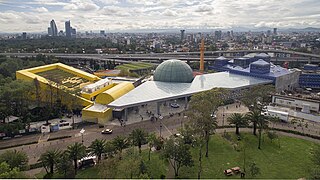
The museum Papalote Museo del Niño is located in Mexico City Bosques de Chapultepec. The museum is focused in learning, communication and working together through interactive expositions of science, technology and art for children.
89. Teatro de la Ciudad Esperanza Iris
The Teatro de la Ciudad was built as the Teatro Esperanza Iris in 1918 and is now one of Mexico City’s public venues for cultural events. The theater is located in the historic center of Mexico City on Donceles Street 36.
90. El Sereno
El Sereno is a statue installed at Glorieta de los Insurgentes, a roundabout in Avenida de los Insurgentes, in Cuauhtémoc, Mexico City. The statue was designed by Víctor Manuel Villareal and was unveiled in 1992. It depicts a watchman, a position that once represented law enforcement. Originally, El Sereno included a lamp and a plaque, both of which have since been removed or stolen.
91. Teatro Fru-fru
The Teatro Fru (Fru Theater) is a theater in Mexico City. It was inaugurated on January 1, 1899 under the name Teatro Renacimiento. In 1973 it was re-inaugurated with its current name. It is located at number 24 in the Donceles Street, in the Centro Histórico de la Ciudad de México
92. Universum Museo de la Ciencias
Universum is Mexico's primary museum dedicated to promoting science and technology to the public as well as support the university's science missions. It was opened in 1992 at the Ciudad Universitaria in Mexico City. Today it has thirteen halls divided by theme dedicated to various permanent exhibitions. It has worked with outside public and private entities to develop both permanent and temporary exhibitions and has worked to develop other science museums in other areas of the country.
93. Casa Lamm
The Casa Lamm Cultural Center was built in the early 20th century when Colonia Roma was a new neighborhood for the wealthy leaving the historic center of Mexico City. In the 1990s the house was restored, and since 1994 it hosts exhibits as well as offering classes in art and literature.
94. Museo Nacional de la Acuarela Alfredo Guati Rojo
The Alfredo Guati Rojo National Watercolor Museum was the first museum in the world dedicated specifically to watercolor painting. It is located in the Coyoacán borough of Mexico City, in a former private house which was donated to the museum by the city government. Due to the public health emergency, as of March 2022 the museum was still closed to casual public visits.
Wikipedia: Alfredo Guati Rojo National Watercolor Museum (EN), Website
95. Basílica de San José y Nuestra Señora del Sagrado Corazón
The Basilica of San José and Our Lady of the Sacred Heart is a Catholic temple located in the San Juan neighborhood of the Historic Center of Mexico City in the Cuauhtémoc Mayor's Office. It was built at the end of the eighteenth century and rebuilt in the middle of the nineteenth century. Its patron saint's day is celebrated on March 19. It is characterized by being one of the few colonial buildings that are preserved in the neighborhood of San Juan and for holding the title of minor basilica. It was declared a historical monument on February 9, 1931,
Wikipedia: Basílica de San José y Nuestra Señora del Sagrado Corazón (ES)
96. Parish of the Holy Child of Peace
The Parish of the Holy Child of Peace is a historic church located near Paseo de la Reforma and Zona Rosa in Cuauhtémoc, Mexico City, Mexico. It is also known as Praga Parish because it is found on Praga 11 Street. The church is known for its German neogothic architecture and was recognized as a temple by the Secretariat of the Interior in 1931.
97. Fuente de la República
The Fuente de la República is a carbon steel fountain and sculpture installed in Mexico City, Mexico. It was inaugurated on 13 December 2007 by Marcelo Ebrard, the Federal District's head of government, and was placed at the intersection of Avenida Paseo de la Reforma, Avenida Juárez and Avenida Bucareli, in the Cuauhtémoc borough. The fountain was created specifically for the celebrations of the 200th anniversary of the country's independence in 2010. It was designed by Manuel Felguérez, who also designed the Puerta 1808 sculpture found in front of it.
98. Kiosco morisco
The Morisco Kiosk is a kiosk structure in Colonia Santa María la Ribera in Mexico City, Mexico. It is situated in the Alameda Park in the center of the Colonia neighborhood, at the intersection of Dr. Atl and Salvador Miron Streets, near Metro Buenavista. The kiosk is built in the neo-Mudejar architectural style that was prevailing in Spain in the 19th century. It is completely made of wrought iron with a glass cupola dome at the top. The kiosk is made of panels that can be disassembled and moved if needed.
99. Capilla de San Juan Bautista
The Chapel of San Juan Bautista is a small Catholic located in the San Juan neighborhood of the Xochimilco Mayor's Office of Mexico City and was built in the mid-eighteenth century. It was declared a historical monument on June 14, 1932.
100. Planetario Luis Enrique Erro
Planetario Luis Enrique Erro is a planetarium located in Mexico City, owned and operated by the National Polytechnic Institute. It was the first planetarium in Mexico open to the public and is one of the oldest in Latin America. It was opened in 1967 and operated for over 39 years with a planetarium projector model Mark 4.
Share
How likely are you to recommend us?
Disclaimer Please be aware of your surroundings and do not enter private property. We are not liable for any damages that occur during the tours.
